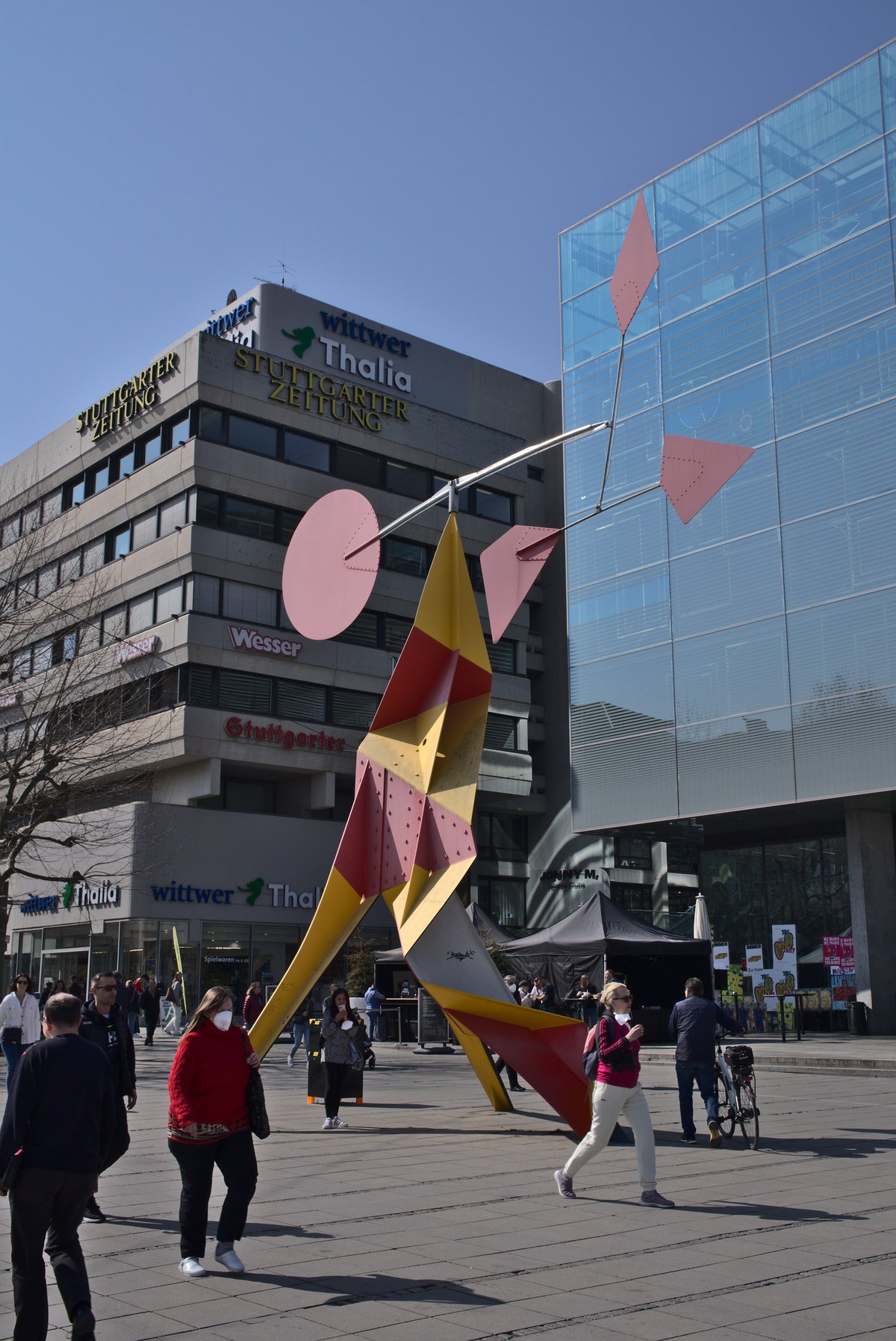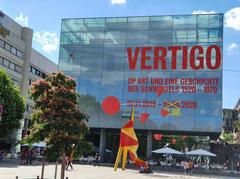
Kunstmuseum Stuttgart: Visiting Hours, Tickets, and Comprehensive Guide to Stuttgart’s Historical and Cultural Landmarks
Date: 14/06/2025
Introduction: The Kunstmuseum Stuttgart in Context
Nestled at the heart of Stuttgart, the Kunstmuseum Stuttgart stands as a beacon of modern and contemporary art, celebrated for both its extensive collection and its remarkable architectural presence. Since its opening in 2005 within the iconic glass cube designed by Hascher + Jehle, the museum has become a central fixture in Stuttgart’s cultural landscape, drawing visitors with its innovative exhibitions, educational programs, and proximity to historic city sites. Whether you’re an art aficionado, a history enthusiast, or a first-time traveler, this guide delivers all the practical details needed for a memorable visit, from opening hours and ticket options to accessibility and nearby attractions.
For the latest visitor information and updates, consult the official Kunstmuseum Stuttgart website.
(Kunstmuseum Stuttgart – History; Stuttgart Tourist; Side of Culture)
Quick Reference: Contents
- Introduction
- Location and Architectural Significance
- Navigating the Museum: Layout and Accessibility
- Collection and Exhibition Highlights
- Visitor Experience: Atmosphere and Engagement
- Practical Information
- Visiting Hours
- Tickets & Admission
- Accessibility
- Facilities
- Best Times to Visit
- Getting There
- Nearby Stuttgart Attractions & Historical Sites
- Frequently Asked Questions (FAQ)
- Conclusion and Visitor Tips
- References
The Museum at a Glance: History and Cultural Role
Origins and Development
The Kunstmuseum Stuttgart traces its origins to 1924, sparked by Count Silvio della Valle di Casanova’s donation of Swabian Impressionist works to the city. Over the decades, the collection evolved, weathering wartime destruction and institutional changes, and ultimately found its permanent home in the contemporary glass cube on Kleiner Schlossplatz. The museum today houses over 15,000 works, including Germany’s largest public collection of Otto Dix, as well as significant pieces by Willi Baumeister, Dieter Roth, and many others (Kunstmuseum Stuttgart – History; Stuttgart Tourist).
Architectural Landmark
Opened in 2005, the glass cube—designed by Hascher + Jehle—rises 27 meters above Stuttgart’s central square, its transparent façade symbolizing openness and modernity. By day, the building reflects the cityscape; by night, the illuminated interior reveals a limestone core, creating a dramatic visual effect. Subterranean galleries, ingeniously repurposed from former traffic tunnels, contribute to the museum’s unique spatial experience (Werner Sobek; Side of Culture).
Planning Your Visit: Hours, Tickets, and Accessibility
Opening Hours
- Tuesday–Sunday: 10:00 AM – 6:00 PM
- Fridays: Extended hours until 9:00 PM
- Closed: Mondays (except on public holidays)
Always confirm current visiting hours on the official website.
Admission and Tickets
- General Admission: Approximately €10 for adults
- Discounts: Reduced rates for students and seniors; free admission for children under 14
- Special Exhibitions: Some may require separate tickets or offer free entry (e.g., “Double Cheese Platter” in 2025)
- Online Booking: Recommended, especially for special events or during high season (Budget Traveller)
- StuttCard Holders: Free entry to the museum (Wanderlust Chloe)
Accessibility
The museum is fully accessible, with elevators, ramps, accessible restrooms, and wheelchairs available on request. The staff is trained to assist visitors with disabilities, and media guides are available for diverse needs.
Getting There
- Address: Kleiner Schlossplatz 1, 70173 Stuttgart (Museum Contact & Directions)
- Public Transport: Short walk from Schlossplatz or Stadtmitte U-Bahn/S-Bahn stations; well connected to Stuttgart Hauptbahnhof
- Parking: Limited paid parking nearby; public transit is recommended due to central location and environmental zone regulations
Collections and Exhibition Highlights
Permanent Collection
- Otto Dix: The world’s largest public collection, including the renowned “Portrait of the Dancer Anita Berber” (1925)
- Willi Baumeister: Pivotal abstract works bridging early modernism and post-war art
- Adolf Hölzel: Realist and early modernist works central to Stuttgart’s art heritage
- Concrete and Constructivist Art: Including Dieter Roth and contemporaries
- Swabian, German, and Swiss Art: Spanning 19th- and 20th-century developments
Temporary Exhibitions and 2025 Highlights
- “Double Cheese Platter: Centenary of the Collection. Twenty Years of the Kunstmuseum Stuttgart”
- Dates: March 8 – October 12, 2025
- Admission: Free
- Features: Seven themed rooms exploring art, consumption, identity, and diversity
- (More Information)
- “Graphics for the Dictatorship” (March 8 – October 12, 2025): Examines graphic art during the National Socialist era
- “From Work to Display” (Until November 2, 2025): Joint project with Kunsthalle Mannheim exploring curatorial contexts
- Contemporary Spotlights: “Frischzelle_31: Suah Im,” “Anita Berber. Orchideen,” and “Joseph Kosuth. Non autem memoria”
Check the current exhibitions page for updates.
Navigating the Museum: Layout, Facilities, and Visitor Experience
Layout and Accessibility
- Spacious, light-filled foyer
- Galleries above and below ground, with clear bilingual signage
- Elevators and ramps throughout for full accessibility
Facilities
- Cloakroom and lockers
- Accessible restrooms on each floor
- Museum shop with art books, prints, and souvenirs
- “Cube” rooftop restaurant with panoramic city views (Sommertage); reservations recommended
Visitor Experience
- Open, inviting atmosphere enhanced by natural and artificial light
- Interactive multimedia guides available for select exhibitions (free via smartphone or museum device, small fee applies)
- Educational workshops and guided tours for all ages
- Non-flash photography allowed in most permanent collection areas; always check signage for special exhibition policies
Best Times to Visit
- Weekday mornings and late afternoons for a quieter experience
- Evenings for illuminated cube views and sunset from the rooftop
- Special event nights, such as the “Lange Nacht der Museen” (March 22, 2025)
Exploring Nearby Stuttgart Attractions & Historical Sites
Take advantage of the museum’s central location to visit:
- Schlossplatz: Stuttgart’s main square with gardens and historic buildings
- Old Castle (Altes Schloss): Home of the Württemberg State Museum
- Staatsgalerie Stuttgart: Renowned art museum with a wide-ranging collection
- Königstraße: Vibrant shopping and dining street
- Stuttgart City Library: Modern architectural marvel
For seasonal events, such as the Christmas Market, Schlossplatz is especially festive (Adventure Backpack).
Frequently Asked Questions (FAQ)
Q: What are Kunstmuseum Stuttgart’s opening hours?
A: Tuesday–Sunday, 10:00–18:00; Fridays until 21:00. Closed Mondays (except holidays).
Q: How much do tickets cost?
A: Standard adult tickets around €10; discounts for students/seniors; children under 14 free; some exhibitions free.
Q: Is the museum accessible for visitors with disabilities?
A: Yes, fully accessible with elevators, ramps, and accessible restrooms.
Q: Are guided tours and media guides available?
A: Yes, in German and English. Media guides are available via smartphone or museum devices.
Q: Is photography allowed?
A: Non-flash photography generally allowed in permanent exhibitions. Restrictions apply in special exhibitions.
Q: What are the best nearby attractions?
A: Schlossplatz, Old Castle, Staatsgalerie, and Königstraße are all within walking distance.
Conclusion and Tips for Your Visit
Kunstmuseum Stuttgart offers an exceptional journey through modern and contemporary art in a setting that exemplifies architectural innovation and cultural vitality. With its world-class collections, dynamic exhibitions, and panoramic rooftop views, the museum stands as a symbol of Stuttgart’s commitment to art and innovation. Its central location, accessibility, and visitor amenities make it a must-see on any Stuttgart itinerary.
For the latest updates on exhibitions, events, and visitor services, always check the official Kunstmuseum Stuttgart website. Enhance your experience with the museum’s media guide app, and consider the StuttCard for added value on your cultural explorations.
Embrace the vibrant fusion of art, architecture, and city life at the Kunstmuseum Stuttgart—where tradition meets innovation and every visit promises inspiration.
References
- Kunstmuseum Stuttgart – History
- Stuttgart Tourist
- Side of Culture
- Kunstmuseum Stuttgart – Press
- Sommertage
- Stuttgart Tourist – Modern Art Museum
- Werner Sobek
- The Crazy Tourist
- Wanderlust Chloe
- Budget Traveller
- Adventure Backpack























































